Alocasia Longiloba Lucifer- Rare
Original price was: ₹8,390.00.₹2,500.00Current price is: ₹2,500.00.
11 in stock
Plant Size: Single plant (2-3Leaves) | Free Shipping | Pot Included
Alocasia houseplants are known for their distinctive and stunning foliage. Broad heart- or arrowhead-shaped, textured leaves can feature flat or wavy edges and boast distinctive veining that is often creamed colored and provides a stark contrast from the deep green of the leaf. Alocasias have a very commanding presence. This plant pulls you in with its striking looks and undeniable charm and adds effortless style to any end table or bookcase.
It is easier to care for the alocasia like all indoor plants when you understand more about its origin. These are subtropical plants that hail from Asia and Eastern Australia. In nature, these plants grow underneath a tree canopy, so the alocasia naturally develops large leaves to help give it an edge over other plants when it comes to soaking up sunlight. Some varieties of alocasia will grow into massive plants with exceptionally large leaves. Smaller types (Jewel Alocasias) are available that are more manageable and will not take over your home if space is a concern. Expect your alocasia to proliferate during the warmer months. These fast-growing houseplants can push out new leaves almost weekly when actively growing. Alocasia will hold steady until the next growing season when the weather turns cold.
Under the right conditions, your alocasia will bloom. The flowers feature a spathe and spadix but are typically concealed by the leaves. The foliage of alocasia is the real showstopper.
Light
Alocasias are adaptable and can handle a range of light from low to bright indirect. The amount of light the plant receives will dictate how quickly it grows. If you want your plant to push out new leaves actively and produce the large leaves it is known for, then make sure the alocasia is in a spot where it can receive plenty of bright indirect light. The plant will survive but not grow as quickly when placed in an area with lower light levels. If you bring your alocasia outdoors in the warmer months, place it in a spot that receives partial shade. Direct sunlight will burn the leaves.
Water
Water alocasia plants when the top couple of inches of the soil are dry. Alocasias have medium water requirements. Even consistent moisture is ideal. Alocasia like to partially dry out between waterings, but they do not like to be soggy. Cut back on watering during the colder months if the plant is not actively growing.
Soil
All alocasia love loose, nutrient-rich potting soil. Use a soil medium that can retain moisture but also allows for draining excess water to avoid root rot. Most pre-mixed soils will suffice. Make sure that there is plenty of organic matter, like coco-coir, peat moss, or shredded leaves, and avoid soils that contain moisture retaining crystals. If your soil drains too quickly, we recommend re-potting your alocasia into a compost-rich soil mixture, with less drainage materials. Learn how to create your own universal soil mixture for all of your indoor plants!
Temperature
As a subtropical plant, alocasia prefer warmer temperatures more in line with their native environment. Average room temperatures above 60°F will be perfectly adequate! If you place your alocasia on a patio or outdoor area during the warmer months, then make sure to bring it back inside well before the temperatures drop below 50 degrees Fahrenheit. Avoid placing the plant near an exterior door, drafty window, or in front of an air conditioning or heating vent. These temperature fluctuations can inhibit growth and potentially damage the leaves. Keep in mind, alocasia will go dormant in the colder months. Although they may not loose all of their leaves, they will stop growing, and should be kept in slightly lower temperatures so they can enjoy their down-time!
Humidity
Alocasia houseplants thrive when they receive lots of humidity which makes sense given their subtropical origins. Placing the houseplant in an area with high humidity is ideal. If you live in a drier climate or just don’t have an area with enough humidity, then consider using a humidifier or a pebble tray with water. These options can help give these plants the extra boost of dampness they crave. Learn how to increase the humidity for your alocasia and other indoor plants!
Fertilizer
Routine fertilizing, especially when the houseplant is actively growing, can help these plants push out new growth. Varieties known for exceptionally large leaves can benefit from feedings. A diluted complete liquid fertilizer, a fish/seaweed emulsion, or a slow-release fertilizer are all excellent choices for alocasia. Do not fertilize your alocasia if the plant is dormant. Learn all about how to fertilize your indoor plants!
Pet Friend or Foe
All alocasias are toxic to pets! Foe!
Pro Tips
- Rotate the pot a quarter turn every time you water your alocasia. This will ensure the plant receives even sunlight and prevent it from growing towards the light and becoming top-heavy.
- Alocasia like to be a bit root bound, so there is seldom an urgent need to re-pot. However, these indoor plants tend to outgrow their pots since they can be fast growers. When it’s time to re-pot your alocasia, select a pot that is 1-2″ larger than the current pot or carefully separate the roots to divide the plant and re-pot into multiple containers. Routinely dividing the plant can help keep it at a more manageable size if space is limited.
- Alocasias have a rhizome-type root system. These thick roots will store extra water for the plant. The nodes are located on the roots, therefore to propagate an alocasia, remove a section of the root and plant it in soil. A new plant will sprout from the rhizome with enough time and the right conditions.
Only logged in customers who have purchased this product may leave a review.

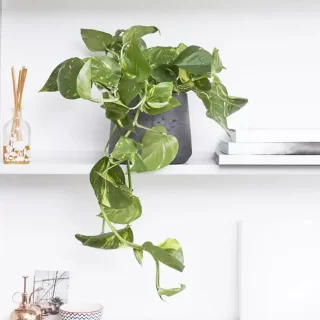
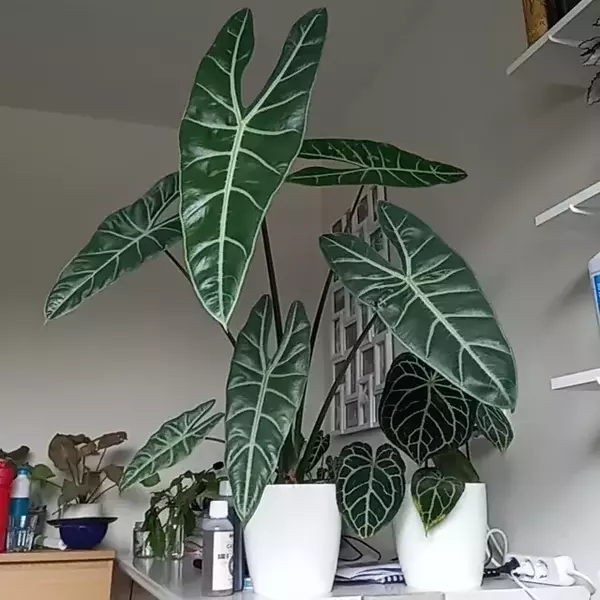
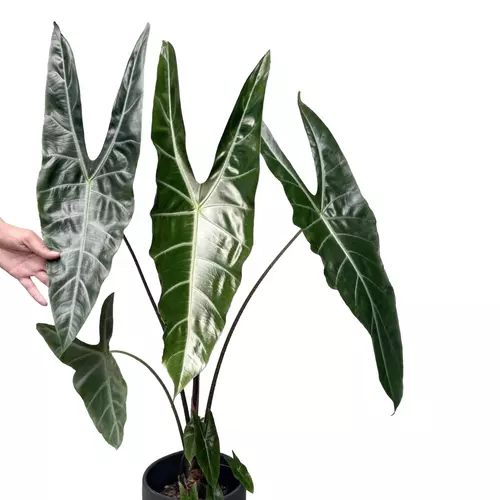
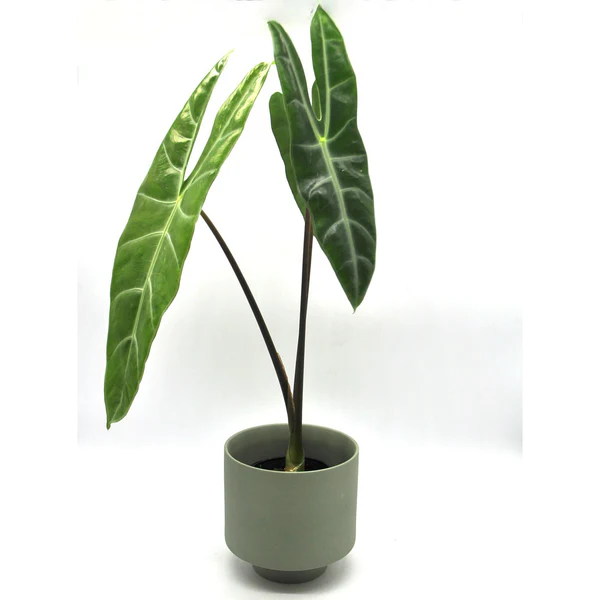
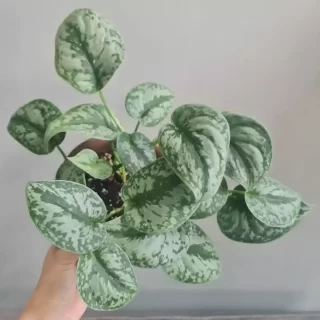
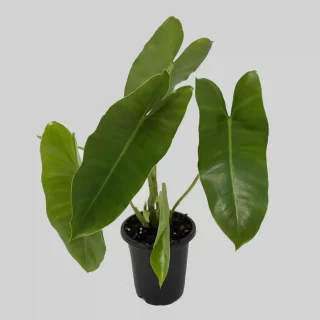

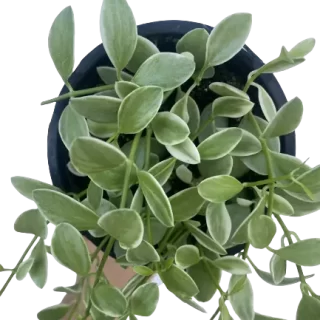
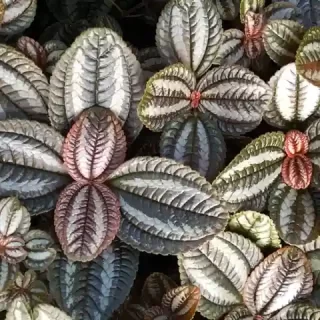
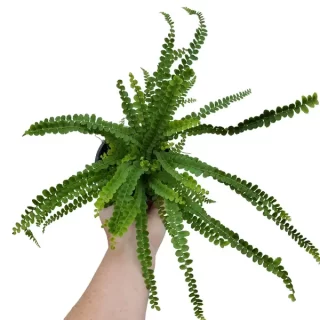
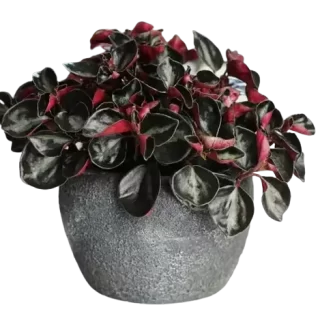
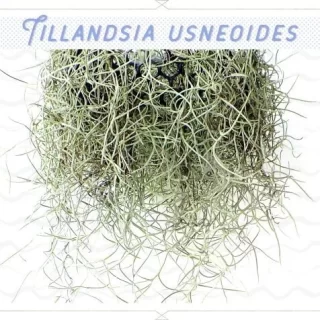
 If you need any assistance, I'm always here. Have you found what you were looking for?
If you need any assistance, I'm always here. Have you found what you were looking for?
Reviews
There are no reviews yet.